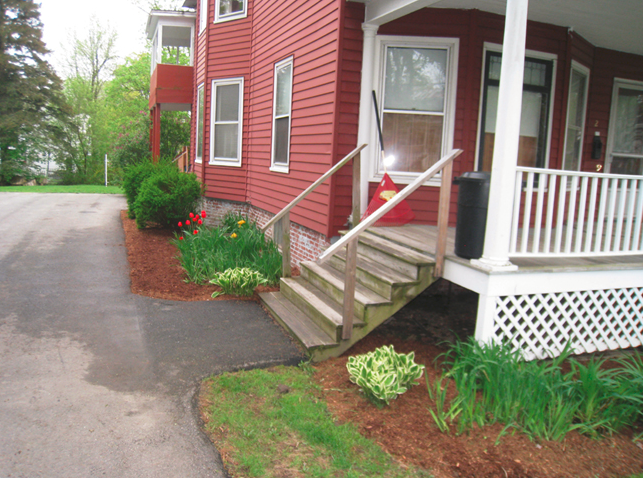Real estate investing question of the week: How much “hassle” is it owning rental property?
Answer by Kenneth LaVoie: This is a little more than needed to answer your question. It is basically my story, and what I’d do differently. To answer your question simply, “The amount of hassle is directly proportional to the quality of the property and location, your attitude and whether you or someone else manages it. Low-income, government-subsidized housing in lower neighborhoods might actually earn you the most money, but will be the most hassle.
Good buildings, low number of units, decent neighborhoods … not as much money, but you might go three months without a phone call. Lastly, I’d say that owning enough units that force you to develop “systems” is good. In other words, if you only have two units, you could go weeks without a problem.
Then when one creeps up, it’s like “Whoa! What do I do?” When you have 40 or 50 (or even 15), it becomes a bigger part of your life and you develop plans and procedures – you get “used” to knowing what to do. On with my story:
What I would do over again in the real estate investment business
My name is Ken LaVoie. My wife, Deb, and I have been investing in rental real estate for nearly six years. Our situation is fairly unique in that we did it quickly. Over a four-year period, we bought 12 buildings, totaling 49 units.
We started in 2009 and bought two single-family homes.
Then in late 2009 we bought a third single-family home as well as a two-, a four- and a seven-unit property for total of 16 units by the end of year one.
I was rushing. I had this poetic sounding scheme of low-cash-flowing, higher-quality single-family and duplex properties with a motherly high-cash-flowing seven-unit property “watching over them” and providing extra cash for them when needed.
I’m learning that when anything sounds really poetic, write it down – but do not necessarily trust that it will work exactly that way.
Then in 2010 I took a detour and bought an REO (real estate owned, typically by a bank) duplex in the worst part of town (which isn’t really that bad) and fixed it up for under $33,000. It’s our highest per-unit cash flow. I get the entire purchase price of the house back every four! I then bought a pair of houses stuck right in the middle of the city. Not great resale value, but a pair of houses for $57,000 makes for good cash flow. I followed it up with another four-unit and finally … got carried away and bought an 11-unit that needed serious, serious repair.
Luckily, we had a state-sponsored program that reimbursed me for half of the cost of all weather-, energy- and longevity-related repairs; otherwise it would have sunk us. To my credit, I slowed down and only bought an eight-unit with a reputation as a crack house in 2011 and finally a huge seven-unit in a beautiful blue-collar neighborhood in 2012. My darling wife and I decided to take a break. Every cent had gone back into these buildings and then some- and we’ve worked too hard to not enjoy some of the fruits.
Three things I would do differently with rental property
So I’d do three things differently: Go a little slower, stick with multi units as large as possible, (i.e. 4-10), stay a little smaller, and stay with higher quality/easy to rent (commonly referred to as A and B properties). Here’s the “why:”
The first two items sort of have to go together. In other words, I don’t think it’s as important to “go slow” if you’re just going to invest in single-family homes or duplexes one at a time, unless you’re completely rehabbing them.
I have developed a preference for multifamily. Yes, you have the added disadvantage of higher turnover (people get married, have kids, buy houses) and tenant squabbles. However, the old fashioned maxim of “having as many families as possible under the same roof, kept warm by the same furnace” really works out on paper and in reality – at least for us. My 11-unit especially has allowed me to make some really stupid mistakes and still be in the black at the end of the month. (Imagine being able to install a brand new furnace and have the roof painted in June and still have cash flow for that month!) We decided we wanted to see real money now vs. the possibility of appreciation, tax benefits and mortgage pay down later.
On blogs these qualities are made out to be “equal,” but everyone I’ve talked to (and I mean everyone except Realtors) have said, “Make sure it cash flows.” I see the value in that.
Expenses are going to be half your income, period. Most people think it’s about 20%. I like to do things right. If a unit needs a new countertop, I put it in. If new windows are needed, I don’t want to do the five-windows-a-year plan, I want them replaced soon. I like to “front load” repairs and upgrades. I’m 48 and want to travel in a few years. When I do, I don’t want a heinous list of “to do’s” stapled to my flight itinerary.
Now because we front loaded all our repairs, plus bought a lot of units in a short time, my potential for costly mistakes was multiplied. I spent a lot of unnecessary money before finding great people. I didn’t get taken advantage of, but I made a lot of judgment errors that come from inexperience. Doing too much in some areas, not enough in others. It would have been more profitable if I’d bought a couple of four-units in year one and kept them for two years, then bought a few more, waited another year or so, and so on.
I’d stay a little smaller, only because we have other means of supporting ourselves in retirement and now I’m realizing too much of our net worth is tied up in the equity in our buildings. Some wouldn’t mind that. I know a local landlord who wouldn’t do anything but buy another run-down building, have his crew fix it up and make 30% on his money. Why do anything else? But laws change, circumstances change, and I love the free lunch of diversification – even if it doesn’t protect 100 percent, it lets one sleep easier. I’d like to keep about 20 of our 49 units and be happy with that.
If I got to go back in time and start over again, I’d pick nothing but higher-quality areas and buildings, regardless of the higher cash flow that can potentially be had from low-priced, lower-income properties. I came to the realization fairly early that you can make 75% of the income (of low-priced, low-income housing) with less than 50% of the hassles.
I would also be a little fussier about “ease of renting.” I wouldn’t worry about what sort of work the building needed; that can be fixed. But I would be very particular about parking features, layouts, etc. If you show an apartment to 10 people, you want nine of them – not two – to like the apartment.
Quality makes all the difference in rental property
Having “desirable” apartments, even if you have to pay a little more, cuts the time they remain empty to almost nothing. Rental rates in our area are about the same whether a building is in a bad area or good. The difference is that eight out of 10 people who call are not going to want the unit in the bad area. So I might have to compromise just a little, or at least show the unit more. With the better area, everyone I show to would be happy with it. I think that’s the secret – own apartments or houses that nearly everyone you show to will like.
Why show a property 10 times and have to agonize over which great tenant you place in the property when you can show it twice? Another upshot: Because (at least in our town) rental rates are within $100 per month of each other whether a unit is a dump or a decent class B unit, there isn’t much economic sensitivity. If renters dry up, you can come down a little but you’ll still be able to rent the unit out.
To sum it up, I’d remember: “Quality will out. In the end, everyone wants quality.”
There are some periods of time that people cannot afford quality, but they’re always eyeing it, always looking forward to being able to afford quality. It’s almost a hardwired desire to have the best we can afford. When you own quality units, you have units that people are “striving” for, vs. units that people are staying in “because they have no choice.”
Many of our units are very desirable, but a few aren’t. I strayed and experimented with “lower income” but “higher cash flow” units. True to their reputation, they have been higher cash flowing, but I have to work my ass off to keep them filled, and sometimes we have had to compromise on the quality of the tenants.
That’s it! Doing what we did, mistakes and all, we’re still doing great, so this is by no means a “complainy pants” tirade (to quote Mr. Money Mustache), but I hope someone else reads this and relates to it and benefits by it in some way, large or small.
Kenneth LaVoie
About the author:
Kenneth LaVoie is the owner of Southern Angel Properties, LLC, in Maine where he purchases and rehabs buy and hold rental properties.
You can visit Ken’s website here.
[hs_form id=”4″]

























0 Comments